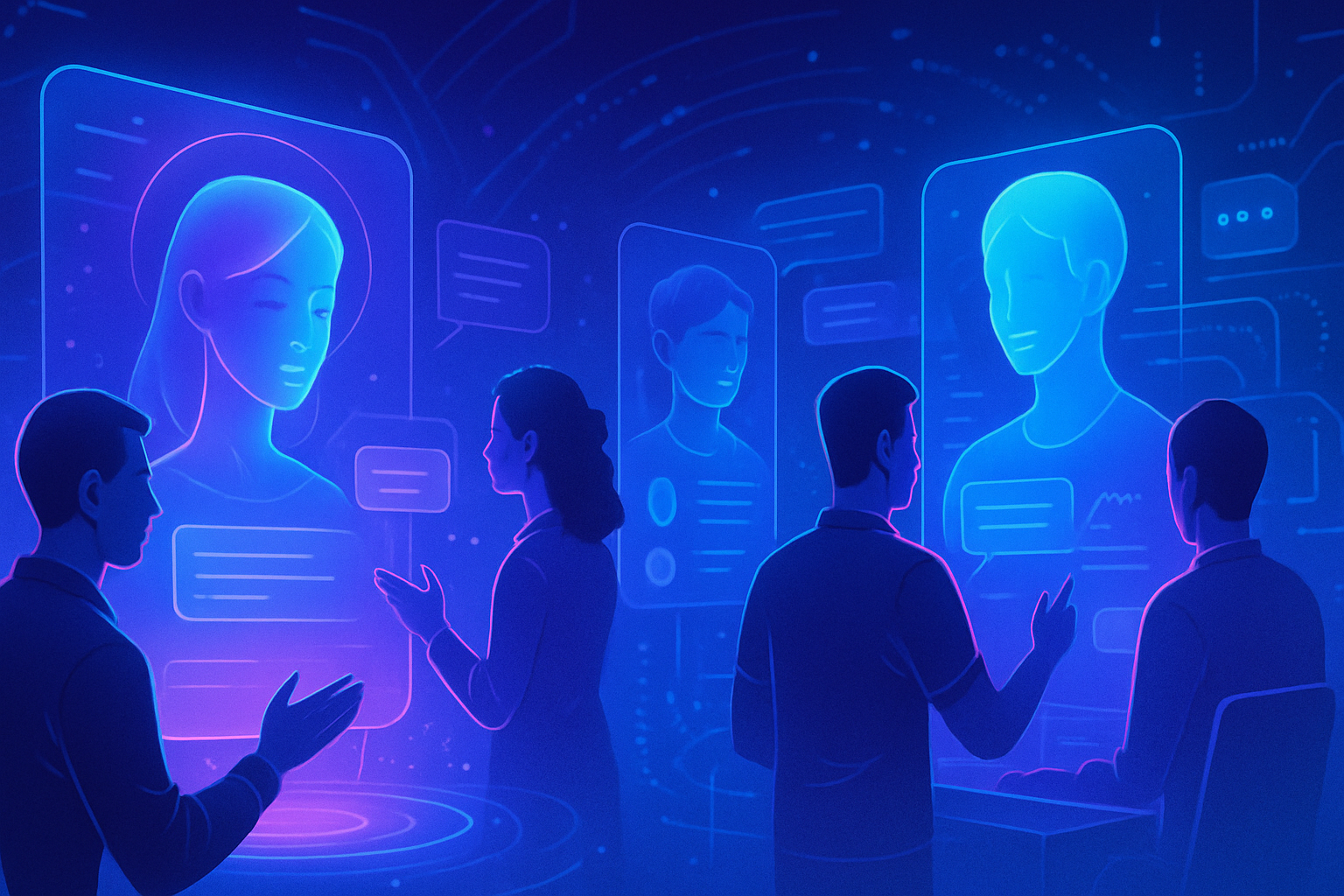The rise of interactive agents redefines the dynamics of customer relationships, bringing unprecedented transformation. Artificial intelligence is no longer limited to automation. Far from being mere tools, these autonomous agents become strategic interlocutors. The synergy between AI agents and humans revolutionizes the customer experience. This emerging paradigm requires a reevaluation of traditional approaches. Companies must adapt to an ecosystem where every interaction is optimized by sophisticated algorithms. The stakes of security and efficiency intensify with this evolution.
The emergence of interactive agents
AI agents are redefining the relationships between businesses and their customers. Their autonomous capabilities bring about a radical change in the way interactions take place. Through the rise of agentic AI, these digital entities are becoming the main players in an ecosystem where brands and consumers sometimes seem relegated to the background. Innovation goes beyond automating repetitive tasks, elevating the user experience to an unprecedented level.
The functioning of autonomous agents
AI agents, such as those developed by companies like Monica with their Manus product, are characterized by their ability to execute complex sequences of actions. These agents can, for example, negotiate with different providers on behalf of a user, adjusting their recommendations in real-time based on the priorities set by their owners. This technology reveals a future where agents interact without human intervention, managing their own dynamics.
With more than 50 tasks managed simultaneously, Manus perfectly illustrates the potential of AI in various sectors. Capable of processing financial data or making purchases, these agents can solve many issues on their own. The possibility of agent-to-agent interactions becomes a tangible reality, marking a milestone in the transformation of business relationships.
Redefining Agent Experience (AX)
The rise of Agent Experience (AX) transforms the design of digital services. Companies are now required to think not only of human users but also of the agents. An AI agent must navigate the web with the fluidity of a human, understand interfaces, and interact effectively with various applications. Digital architectures require a revision to provide optimal accessibility.
Securing these interactions relies on robust protocols, such as OAuth 2.0, ensuring that each exchange adheres to high security standards. Companies must also open their APIs and establish robust authentication flows to facilitate dialogue between AI agents.
Economic consequences and challenges to overcome
The ability of agents to interact promises an unprecedented acceleration of transactions across various sectors. For example, in finance, autonomous agents could negotiate and execute operations in real-time, transforming market dynamics. In retail, supply chains and pricing strategies could be managed autonomously by agents, thereby optimizing financial outcomes.
Companies must also face technological and ethical challenges. Creating AI agents capable of defending a company’s interests is essential. This involves not only a strengthened digital presence but also establishing autonomous dialogue with agents from other entities, such as consumers. The potential impact on employment and responsibility in the case of systemic errors raises fundamental questions.
A hybrid approach as a solution
To navigate this new environment, companies opt for a *hybrid* approach, combining the efficiency of AIs with human emotional intelligence. In the future, AI agents will handle repetitive tasks, allowing humans to focus on interactions that require empathy and creativity. This complementarity enriches the added value of the services offered.
Initiatives like the standardized A2A protocol, entrusted to the Linux Foundation, testify to this evolution. The development of open-source standards for interaction between agents represents a strategic turning point, thus laying the foundations for a new era. Companies must adapt to this technological reality to maintain their competitiveness in the market.
Finally, the changing digital landscape requires significant investments in modernizing infrastructures. Companies need to design comprehensive systems, balancing performance and security, that meet the demands of an increasingly discerning clientele.
Questions and answers about the emergence of interactive agents in customer relations
What is an interactive agent in the context of artificial intelligence?
An interactive agent is an AI system that can autonomously interact with other agents or humans to accomplish specific tasks, thereby optimizing communication and customer service processes.
How do AI agents improve interactions with customers?
AI agents can handle repetitive requests, provide instant responses, and customize interactions based on customer preferences, which enhances overall efficiency and satisfaction.
What are the main advantages of using interactive agents for businesses?
Utilizing interactive agents allows businesses to reduce operational costs, accelerate transaction processes, and offer 24/7 availability, promoting a better customer experience.
Can AI agents completely replace human agents in customer service?
No, AI agents are not meant to entirely replace human agents but rather to complement their work by handling routine tasks, allowing humans to focus on interactions that require more empathy and creativity.
What are the security considerations associated with using interactive agents?
The security of automated transactions is crucial. Companies must ensure that their authentication systems are robust and follow secure protocols to avoid unauthorized access and protect sensitive data.
How is digital architecture evolving to integrate AI agents?
Digital architectures must be designed to be readable by AI agents, with open APIs and suitable authentication flows that allow AI systems to interact seamlessly.
What is the impact of interactive agents on the economy?
Interactive agents can generate a significant acceleration of transactions across various sectors, optimizing processes such as trading or supply chain management, and transforming the economic landscape.
How can companies prepare for the integration of interactive agents?
Companies must invest in training their staff, upgrade their technological infrastructure, and develop strategies to systematically and securely integrate AI agents.
What are the technical challenges to overcome for successful integration of AI agents?
Challenges include securing interactions between agents, managing responsibility in case of errors, and adapting existing systems to be compatible with the automation of processes by AI agents.






